Comedian Steven Wright said, “I just bought a microwave fireplace. You can spend an evening in front of it in only eight minutes.”
Like Wright’s imaginary fireplace, microwave ovens can also save us time. In this case, they can speed up defrosting and cooking our meals. In our busy world, microwaves have become such a default cooking appliance that, for many of us, it’s hard to imagine living without one.
But despite their popularity, questions linger about their safety. Concerns about microwave radiation, loss of nutrients in food, and proper usage continue to spark debate.
In this article, we’ll examine the pros and cons of microwave ovens, share tips on using them safely, and discuss which foods are best to cook in them.
What Are Microwaves and How Do They Work?
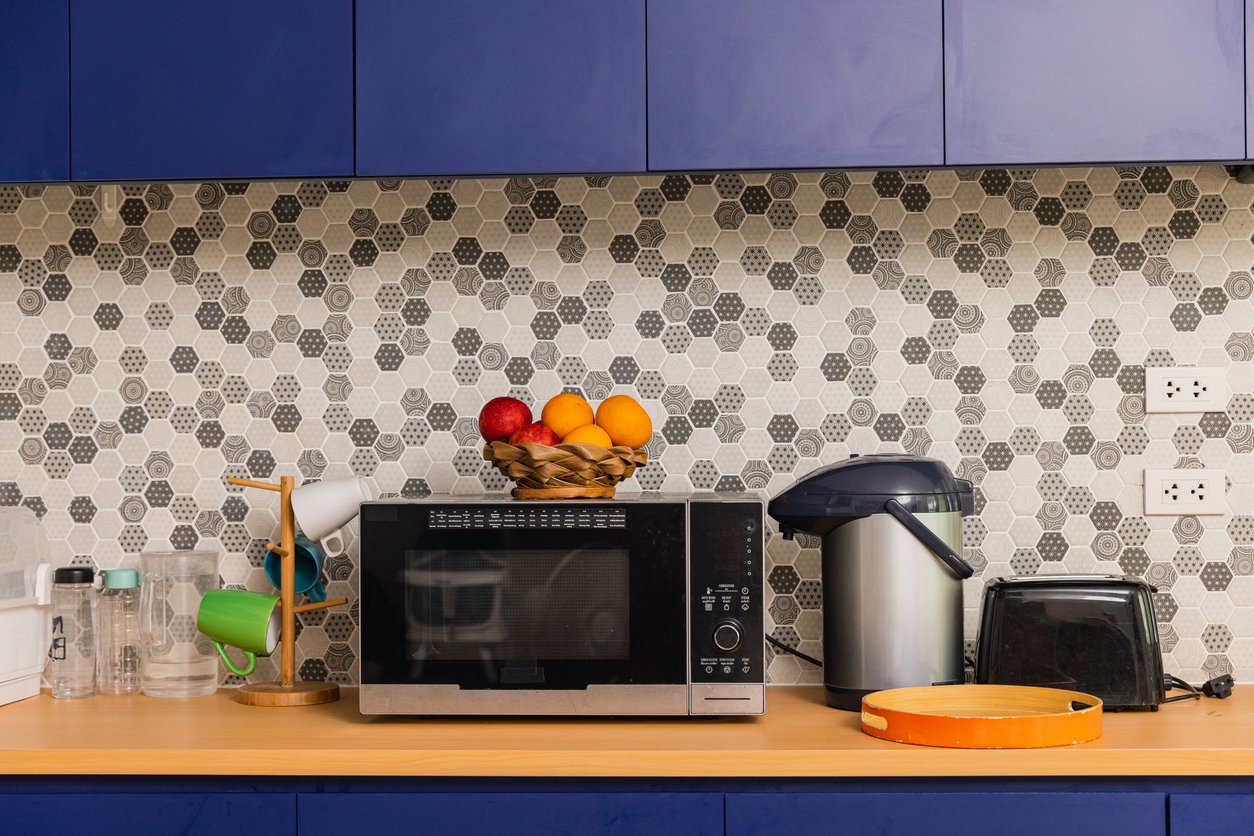
Microwave ovens have been widely available to consumers since 1967, but the first one was invented in 1946. An engineer named Percy Spencer discovered the capability of microwaves to cook food when he accidentally melted a candy bar in his pocket while standing next to a magnetron (a device that produced the radar waves used to detect aircraft during World War II).
Instead of bemoaning his dry cleaning bill, Spencer got excited and held a bag of unpopped popcorn beside the magnetron. This time, instead of stained trousers, he got delicious hot popcorn. This was a prescient choice: popcorn is still one of the most popular microwaved foods.
Microwave ovens use microwaves, electromagnetic waves that are longer than infrared radiation but shorter than radio waves. A magnetron device converts electrical energy into microwaves and sends them into the cooking space through a special channel or waveguide.
Contrary to popular belief, microwaved foods don’t cook from the inside out. Instead, microwaves excite water molecules, which wriggle back and forth to produce friction and heat. Since water is unevenly distributed in food, most microwave appliances include a rotating glass turntable to cook food more evenly and prevent cold spots (although this is often an imperfect process, as anyone who’s bitten into a frozen chunk in a steaming microwaved calzone can attest).
Are Microwave Ovens Safe?
Microwave ovens use radiation to heat food — a fact memorialized in the slang for using the appliance: “nuking” food. However, the real health concerns with microwaves have more to do with the foods and containers we put in them than with the nature of the heating process. Let’s examine the facts.
The Association Between Microwaves and Unhealthy Foods
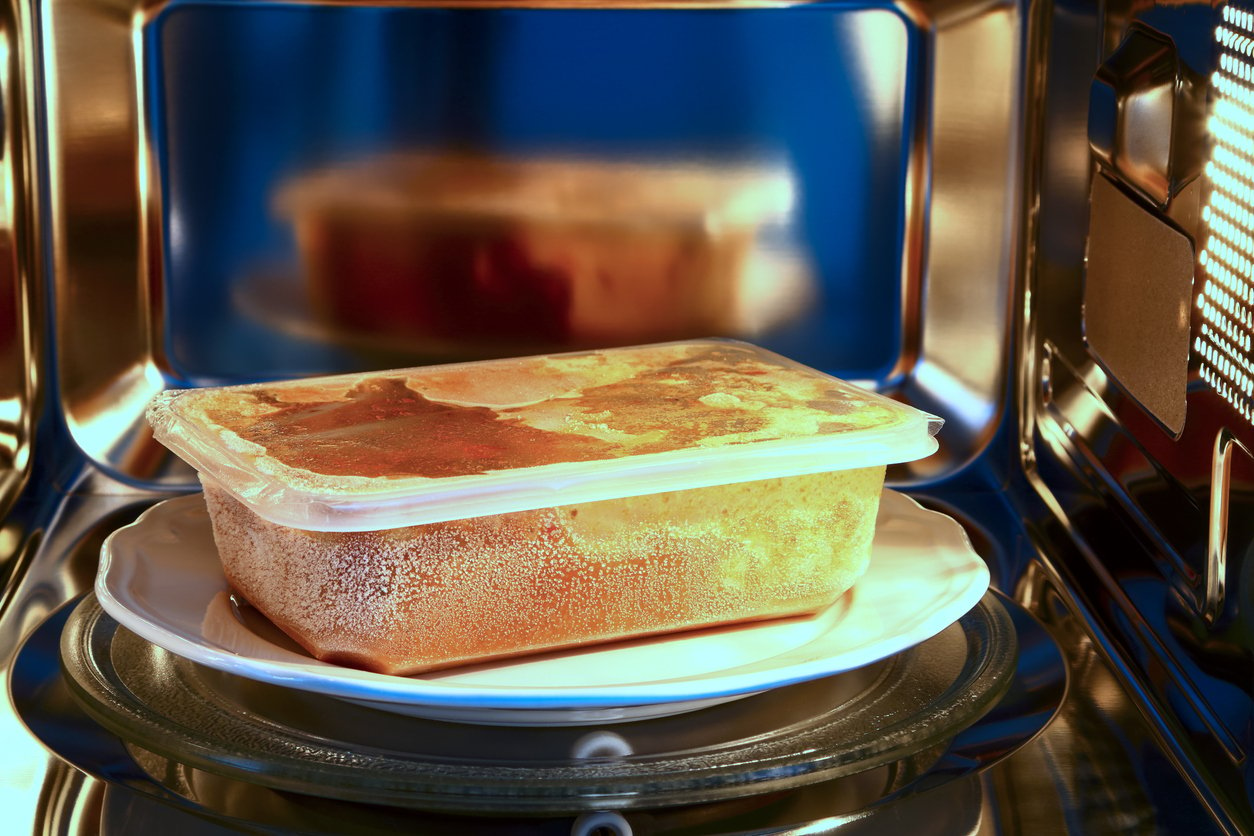
One of the biggest issues with microwave ovens is not the appliances themselves but the foods that are often cooked in them. In our busy, on-the-go society, people often use microwaves to cook or heat up ultra-processed frozen meals and food-like products that are not doing human health any favors.
Since the 1950s, the food industry has innovated tens of thousands of products designed to cook in microwave ovens. But many of these foods contain excess sodium, GMOs, natural flavorings, preservatives, and other unhealthy ingredients.
There’s a world of difference between microwaving an industrially produced frozen TV dinner and cooking some frozen vegetables — especially when said vegetables are cooked in microwave-safe dishware. While the former can harm your health in the long term, the latter is a fine way to warm or cook food in a hurry.
Heating Plastic in the Microwave
Many TV dinners instruct you to cook them with some of the plastic packaging still intact. But when plastic is heated, toxic chemicals like BPA and phthalates can leach out, contaminating your food with endocrine disruptors.
Even so-called microwave-safe plastic containers may not be what they seem. The Milwaukee Journal Sentinel put 10 “microwave-safe” containers through a microwave oven and tested them in a lab. The containers included plastic types 1, 2, 5, and 7. The results showed bisphenol A, or BPA, leached from all of them when heated in the microwave. And the amounts detected were at levels that can cause neurological and developmental damage in laboratory animals.
Phthalates found in plastics may also disproportionately affect children’s health, including increasing the risk of metabolic disorders, asthma, and ADHD.
Frederick vom Saal, a University of Missouri researcher who guided the newspaper’s testing, commented: “There is no such thing as safe microwaveable plastic.”
Microwave Radiation
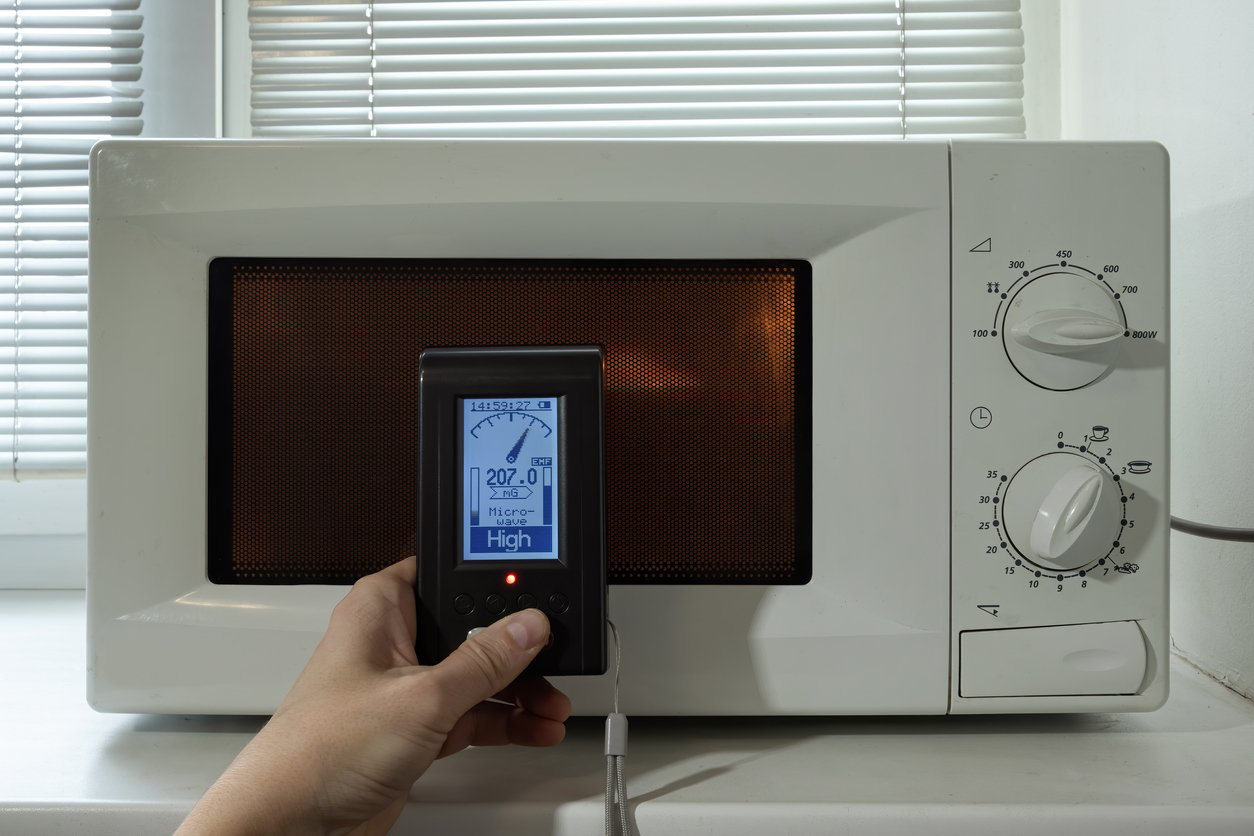
The World Health Organization notes that one of the biggest myths about microwave ovens is that foods cooked in them become radioactive. After all, “nuking” does have some pretty terrifying connotations.
But while microwave ovens emit a type of microwave radiation, it’s non-ionizing, unlike nuclear and x-ray radiation, both of which are ionizing. What’s the difference? Non-ionizing radiation means electrons are not knocked out of affected atoms, whereas ionizing radiation can alter atoms, molecules, and cells.
According to the FDA, which has been regulating microwave ovens since 1971, radiation-related microwave injuries, such as burns, are very rare. Cases are typically the result of improperly serviced appliances that leak, causing people to become overexposed to microwave radiation. In comparison, getting burned by a conventional oven — such as being hit by a blast of hot air when the door is open or exposing yourself to harsh elements — is a more common and immediate risk.
FDA regulations require that microwave ovens be sealed to prevent high-level radiation leaks. Their website notes that there is little concern about radiation leakage unless the microwave’s door seal, latch, or hinges are damaged. If you can’t fully close the door to your microwave, the FDA recommends no longer using it.
Cancer-Causing Compounds?
Another concern about microwaving food came from a 2015 study published in the Journal of Food Processing and Preservation, which raised concerns about cooking meat in a microwave. The study found microwave cooking produced more cancer-causing heterocyclic aromatic amines (HCAs) than pan-frying or baking. Microwaving also produced more HCAs than barbecuing, the cooking method most closely linked to HCA formation.
While the study didn’t definitively say microwaves cause cancer, if you consume animal products, you may want to think twice about heating them in the microwave.
Microwaving can also cause acrylamide formation. Acrylamide forms in starchy foods when cooked at high temperatures, typically producing browned, crispy surfaces—such as those seen in French fries or potato chips. However, browning is minimal when microwaving, so only trace amounts of acrylamide might form.
It’s worth noting that acrylamide formation in microwaves is a concern primarily with the prolonged cooking of starchy foods, like potatoes, rather than the brief reheating of meals. For most everyday microwave use, such as warming leftovers, acrylamide formation is not a significant issue.
Although acrylamide is classified as a probable carcinogen, debate exists on whether the amounts typically found in food are enough to cause a problem.
For more on acrylamide, check out our in-depth article: Is Acrylamide Dangerous & How Can You Avoid it in Your Food?
Undercooked Food
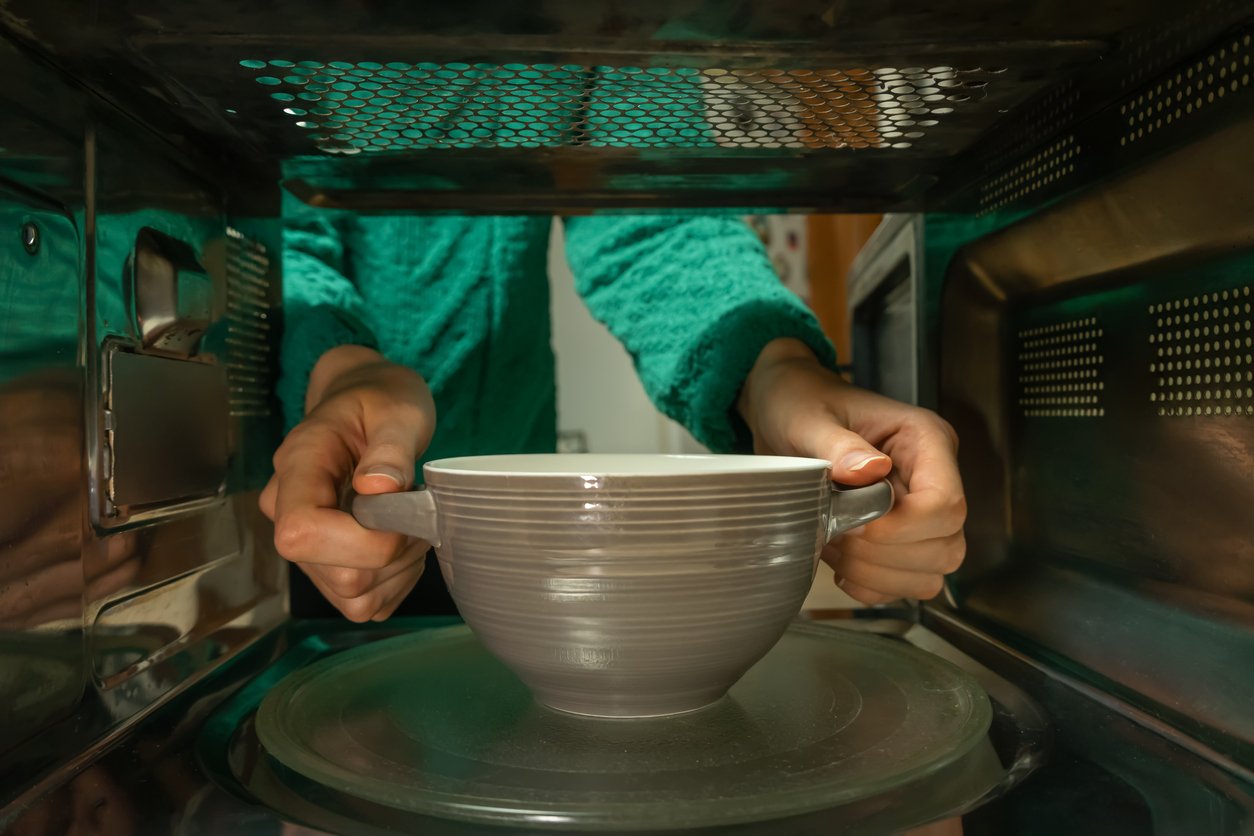
Despite their rotating turntables, microwaves don’t always cook foods evenly. (While pressing an eye against the door glass to survey the revolving plate may be hypnotic, it doesn’t give you much actionable information about whether your burrito is fully heated.)
Solid foods take longer to reach optimal temperatures in a microwave than fluid or semi-fluid foods because they contain less water. You can compensate by adding extra liquid or pausing the microwave and stirring the dish before resuming cooking.
While undercooked food isn’t ideal in any scenario, it’s downright dangerous for meats, fish, and other high-risk, animal-derived products that must be heated to 145–165°F to kill pathogens. When cooking these kinds of foods in the microwave, it’s recommended that you use a food thermometer to check internal temperatures.
Possible Nutrition Loss
There are also concerns that microwaving food may reduce its nutritional quality. However, these concerns may not be as serious as they initially sound.
For example, a study published in the International Journal of Food Sciences and Nutrition found that protein from microwave-cooked legumes was 5% less digestible than protein from legumes cooked in a pressure cooker. This difference likely reflects the enhanced breakdown of cell walls achieved through pressure cooking rather than an inherent shortcoming of microwave heating.
A review in the Journal of Nutrition also found that a 60-second microwave heating time was long enough to deactivate the cancer-fighting compound alliinase in garlic. This is a good reason to eat garlic raw. But again, it’s not inherently a problem with microwave cooking. Any cooking method — including steaming and sautéing — that exposes garlic to sufficiently elevated temperatures may also deactivate alliinase.
Critics may also note that because water is often added during microwave cooking, water-soluble vitamins like B vitamins and vitamin C can leach into the cooking water. However, this isn’t unique to microwaving — similar losses can occur with other cooking methods that use water. To minimize nutrient loss, steam your food in a closed container with a lid, and if you do use any cooking water, incorporate it into soups or as a base for cooking grains to recapture those vitamins.
To summarize, microwaves don’t cause nutrition loss any more than other forms of cooking.
4 Potential Benefits of Using Microwaves
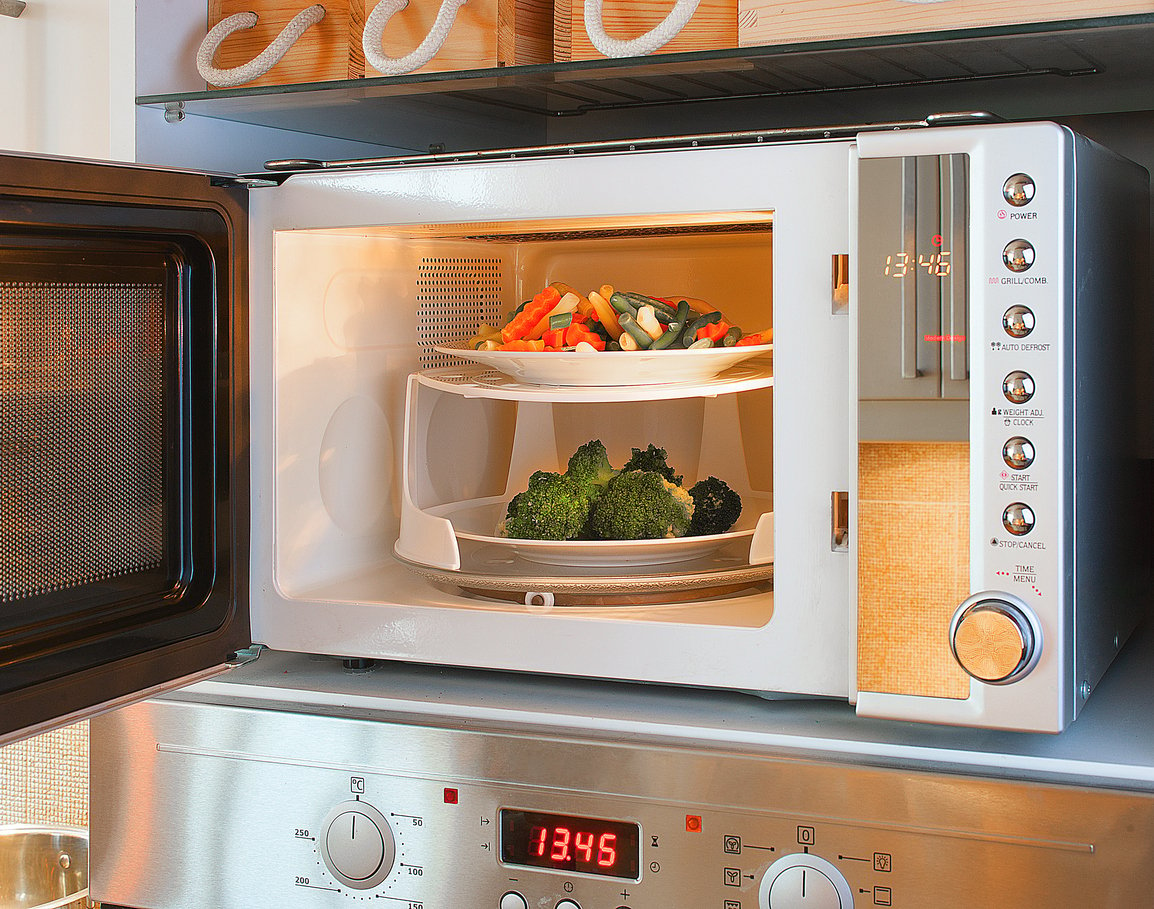
Microwave cooking isn’t all downsides and harm mitigation. There are also some benefits to consider.
1. The Convenience of Microwaves
Microwave ovens are just about the fastest and easiest way to prepare (or at least heat) many foods. Their speed and ease of use can be a game-changer for people with hectic schedules, enabling them to quickly cook meals or reheat leftovers without much effort. This convenience often removes a common barrier to eating healthier foods, such as vegetables, which might otherwise seem too time-consuming to prepare.
In most cases, the best way to cook vegetables is the one that gets you to eat them. For some people, based on convenience, that may be in a microwave oven.
2. They’re Easy to Clean

Microwave ovens are also easier to clean than most conventional ovens. You can put the glass turntable in the dishwasher or wash it by hand. If food splatters inside the microwave, inexpensive and non-toxic cleaning products like water, dish soap, baking soda, and vinegar can remove the residue.
Here’s a video showing a cool way to clean your microwave’s interior using a bowl of water with added vinegar and lemon quarters:
https://www.youtube.com/watch?v=fZn6-Ay-QiY
Office Microwave Ovens. Recent studies have highlighted that communal microwaves, such as those in office kitchens, can harbor various bacteria, including Bacillus, Micrococcus, and Staphylococcus. These bacteria can survive microwave radiation, especially when food residues are present. To mitigate risks, it’s recommended to regularly clean microwave surfaces, cover food during heating, and ensure food reaches an internal temperature of at least 165°F (74°C) .
3. Preservation of Antioxidants
Some research shows that vegetables cooked in the microwave retain more antioxidants than those cooked via other methods.
A study published in the Journal of Food Science looked at the effect of boiling, microwaving, pressure-cooking, griddling, frying, and baking on the antioxidant activity of 20 different vegetables. They found that griddling, microwave cooking, and baking resulted in the smallest antioxidant losses. Cooking methods that used water had a more significant impact on antioxidant activity in vegetables. The difference here is not huge, but it is a point in the microwave oven’s favor and contradicts the concept that microwaving somehow destroys the structure and health-promoting qualities of food.
Another study found that microwaving increased total antioxidant levels and reduced antinutrients such as tannins, oxalates, and phytates. The practical consequences of this are unclear. First, the food in question was de-oiled rice brain, which isn’t exactly a staple in my home (or any other, as far as I know). Second, no studies have looked at how microwaving vs. other cooking methods affects the levels of antioxidants in the people eating those foods, which is what we really want to know.
4. They Save Heat, Energy, and Money

Another perk of microwaving food is that it doesn’t heat your house like conventional ovens. Making baked goods or a casserole in a conventional oven can heat your kitchen for hours. While this may be cozy in the winter, it can make a hot summer day even sweatier or force your air conditioner to work even harder for longer.
Microwaves can also help you save on your energy bill directly. They may use up to 80% less energy than conventional ovens and cost 2–3 times less to use than gas or electric stoves. That can add up, especially if you cook regularly.
Practical Tips for Safe Microwave Use
Using a microwave safely involves more than just pressing a button — it requires understanding how to protect yourself from injury. Here are some tips to help you use your microwave effectively, keep yourself safe, and keep your food quality as high as possible.
What You Can and Can’t Put in a Microwave
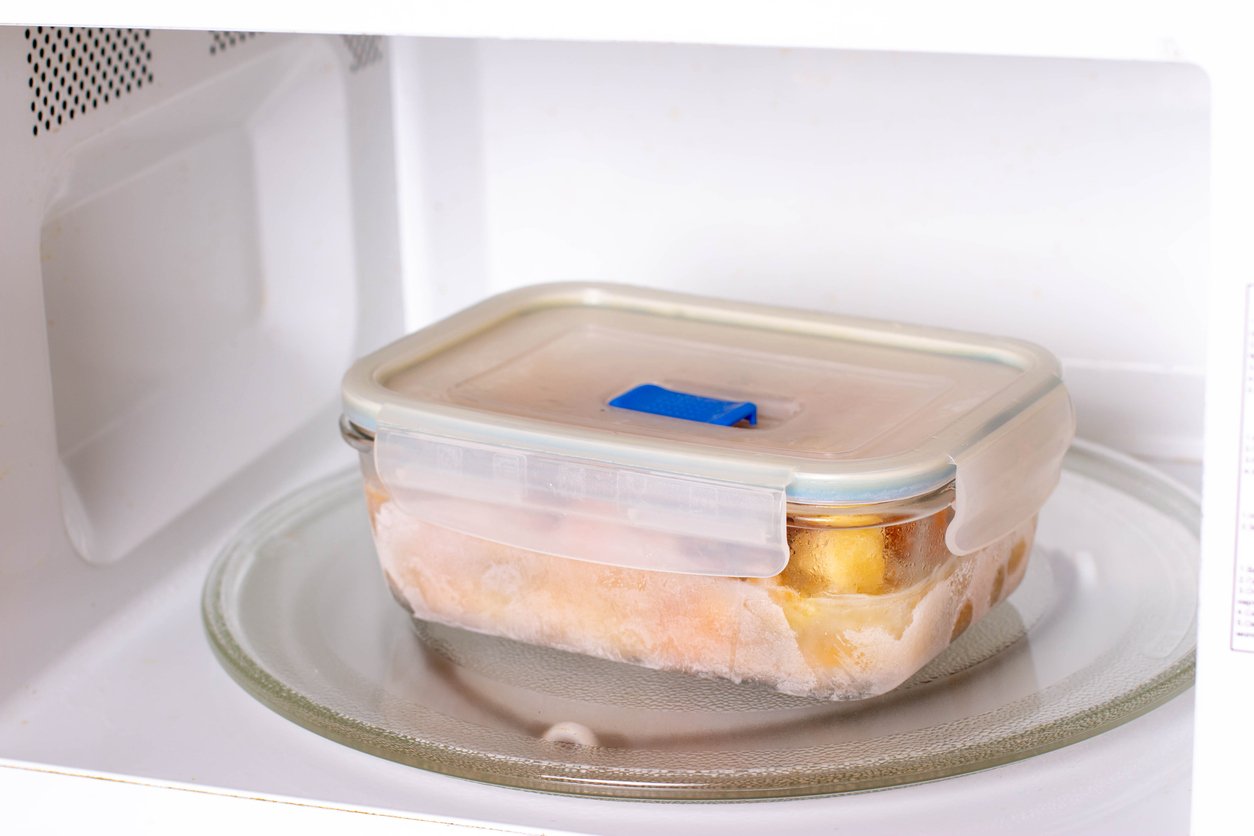
What you cook food in matters almost as much as the food itself when cooking in a microwave oven. Certain materials are big no-nos and can be dangerous to your health, while others are safe for use in the microwave.
Plastic (Even Those Marked “Microwave-Safe”)
Many packaged foods (especially frozen) and plastic storage containers are marked as microwave-safe. These containers may have a symbol with wavy lines to indicate microwaves or a picture of a microwave with wavy lines inside.
This designation does mean that these containers will hold their shape and not melt under the heat of the microwave, but it does not mean they’re inherently safe for your health.
Plastics contain chemicals that can leach into food when heated, including BPA, phthalates, and PFAS. To avoid exposure to these toxic chemicals, don’t put plastic packaging or containers in your microwave.
Styrofoam
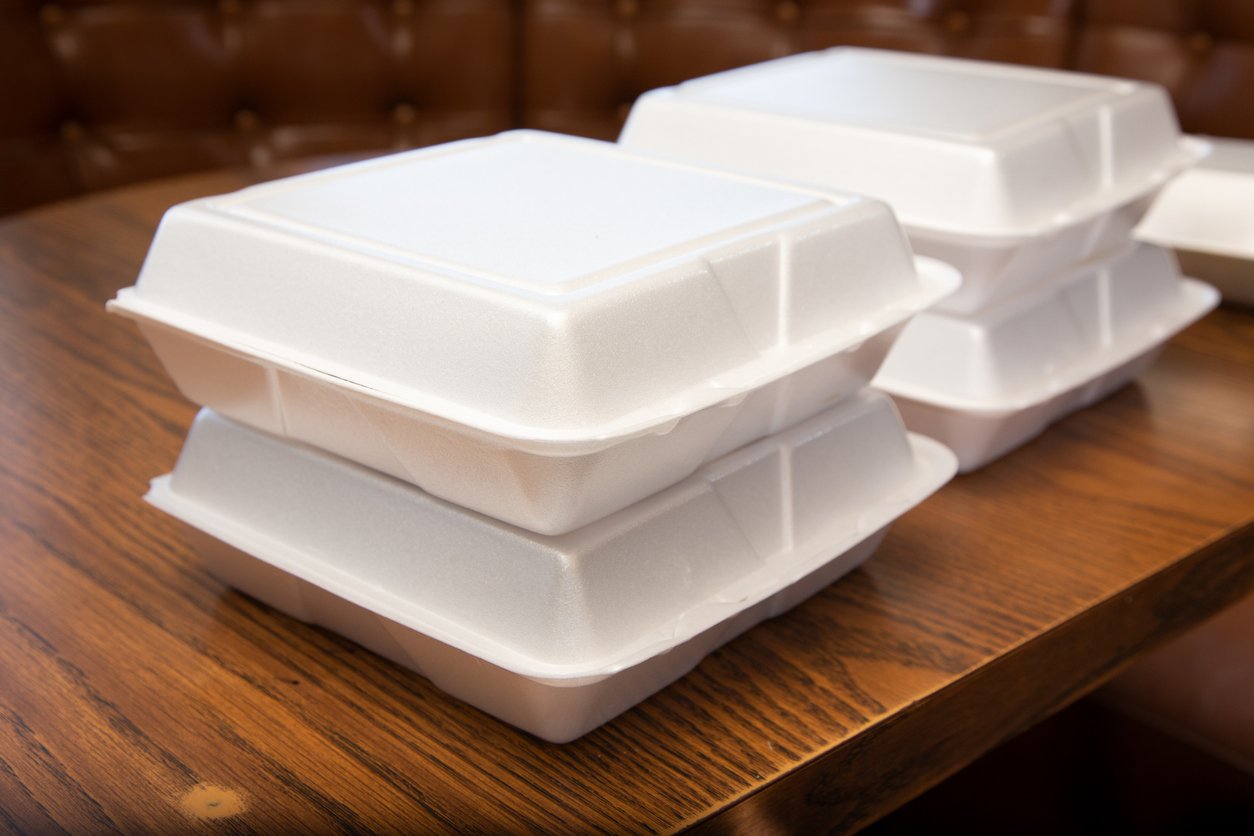
Some styrofoam containers may be marked as microwave-safe. However, like plastic, styrofoam can melt and release harmful substances. Styrofoam is a combination of styrene and isobutene, which have been classified as potential carcinogens. Don’t use styrofoam in the microwave unless you want a side of toxic chemicals with your food.
Paper Products
Paper plates that are uncoated are usually safe for microwaving. However, avoid using metallic, wax-coated, or decorative plates in the microwave, as these may leach chemicals or ignite.
Glass

Glass is generally the best container for the microwave. It doesn’t heat up excessively like other materials and won’t warp or leach chemicals like plastics. Many Pyrex glass containers, made of either tempered or borosilicate glass, are safe to use in the microwave.
Don’t use glass containers that are even slightly cracked, however, as they may shatter when exposed to high temperatures.
Not all glass is microwave-safe. Never microwave crystal glassware, which can contain lead. Even if the crystal is non-leaded, it may contain other minerals, especially if decorated, which can ignite or release unsafe materials into your food and beverages.
If in doubt, look for the microwave-safe designation on the bottom of the glass container.
Ceramic
Some ceramic dishes, bowls, and mugs are safe in the microwave. However, avoid handmade ceramics with metallic accents, glazes, or paints, as these can cause sparking, uneven heating, and chemical leaching. Handmade ceramics should be made with a food-safe glaze and fired at a high temperature. If you’re unsure, ask the artist or manufacturer, or look for those three wavy lines on the bottom that designate “microwave-safe.”
Aluminum Foil or Other Metals

Aluminum foil and other metals are generally not safe to use in a microwave. When microwaves interact with metal, they can create electrical arcs, which may damage the appliance or even start a fire.
If turning your microwave into an inferno isn’t reason enough to avoid aluminum foil, there’s another reason. The foil can block microwaves from properly heating food, leading to uneven cooking. Some manufacturers design specific foil wraps or microwave-safe containers, but these should be used only according to the product instructions. If you’re unsure, I strongly urge you to keep all metals out of your microwave — even if they’re “only” metallic glazes, accents, and lettering.
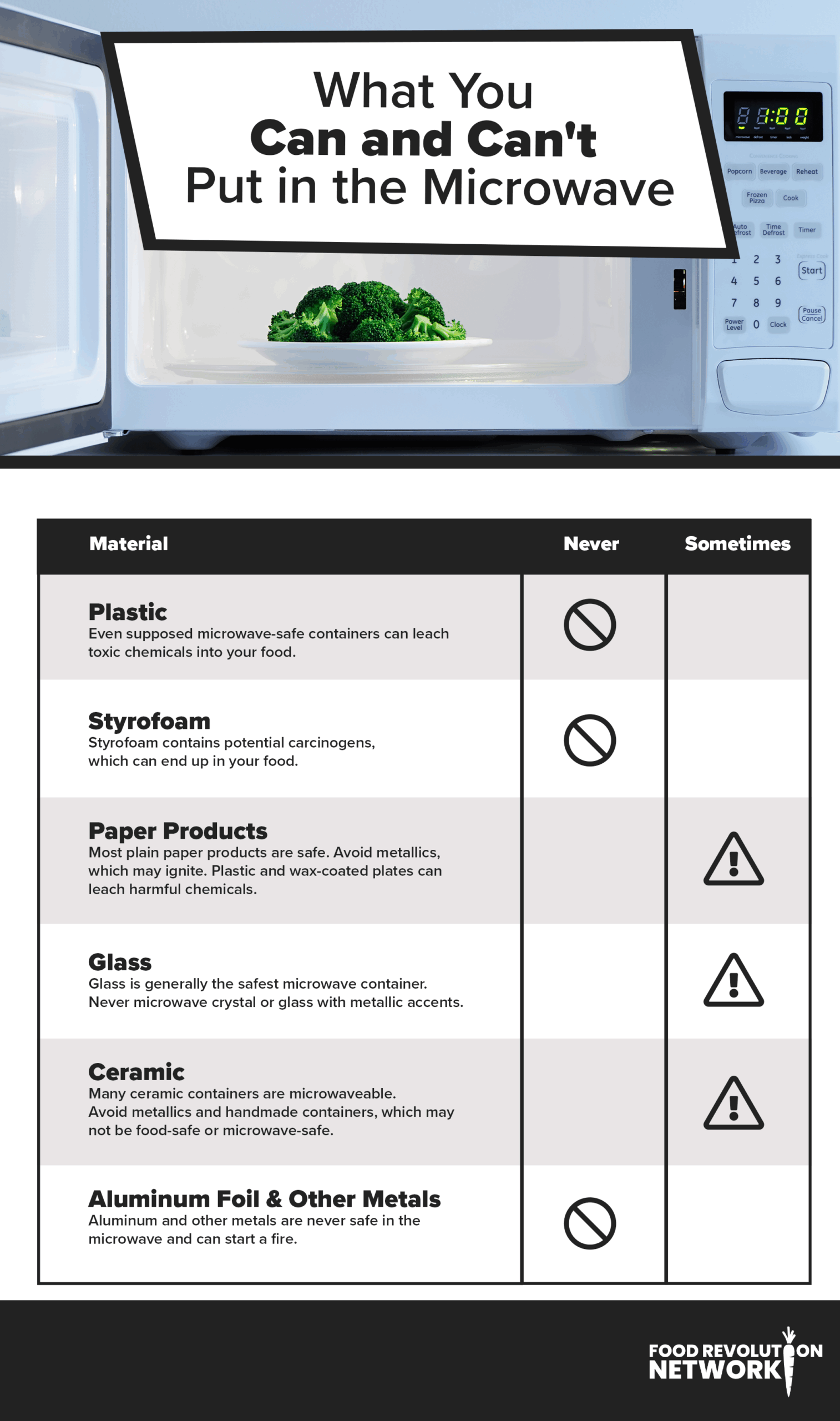
Avoid Superheating Liquids
On average, 21 people end up in emergency rooms every day in the US from “microwave oven-related injuries.” A few are from microwave popcorn steam, overheated hair removal wax, and nearly one a day from exploding eggs (resulting from the pressure buildup of internal steam), but most are from overheated water.
Overheated water has reached boiling temperature, but looks like it’s “forgotten” to boil. It sits in a glass or mug, looking calm and placid, but it is just waiting to violently erupt into the air when disturbed — like when a person picks it up and peers into it wondering why it isn’t boiling. Ouch!
The FDA warns against being careless when boiling water in a microwave oven, particularly when dumping something into it afterward. Microwaves boil liquids faster than other methods, so follow manufacturer or cooking instructions and do not overheat foods or liquids.
To avoid getting burned, always use potholders when removing hot foods from the microwave, just as you would with a regular oven.
Regularly Check Your Microwave for Damage or Malfunction
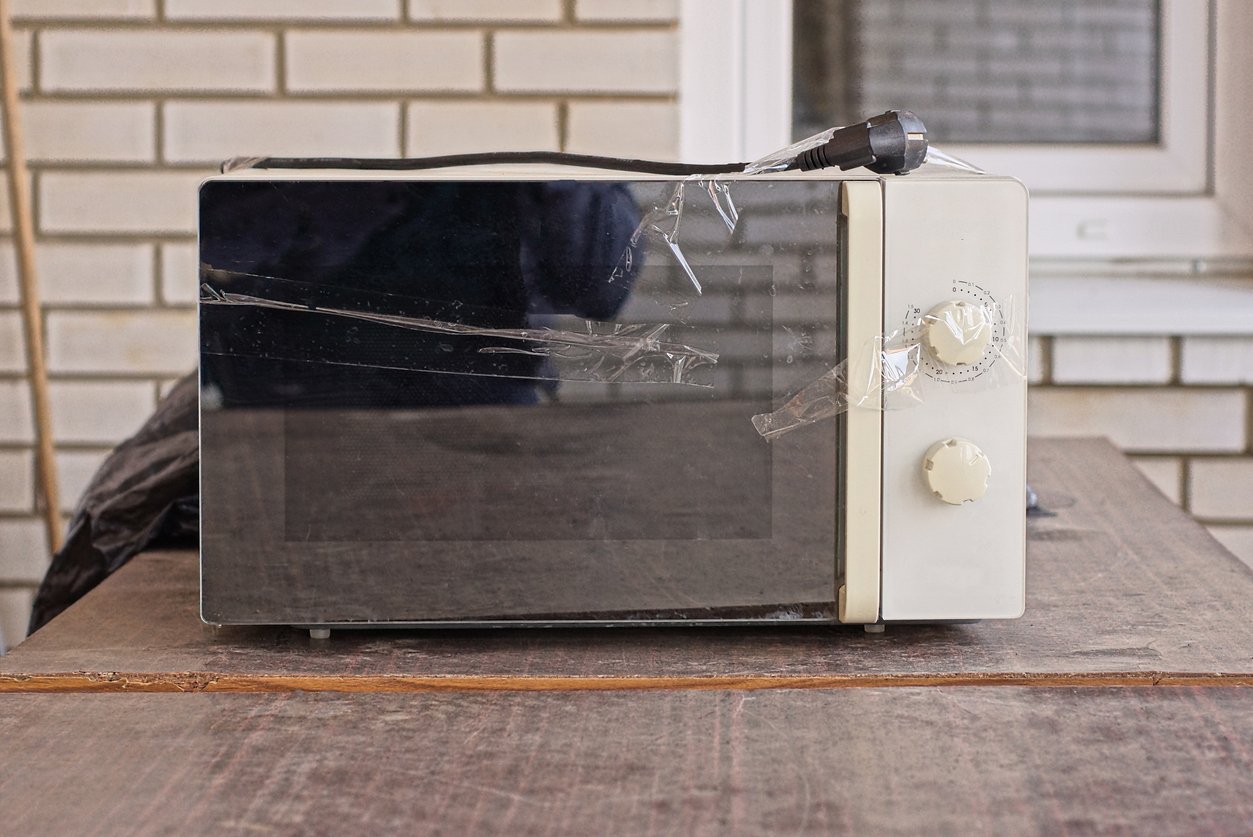
Regularly checking your microwave is an essential step in ensuring its safe operation. You can do this monthly or yearly, depending on the age of your microwave.
Start by inspecting the door seal and hinges for signs of wear. A damaged seal can allow microwave radiation to leak.
Check the power cord for fraying or other damage which can pose a fire hazard.
If you notice sparks, unusual noises, or inconsistent heating, these could be signs of a malfunctioning magnetron (the device that produces the microwave’s radiation waves) or other internal components. In such cases, stop using the microwave immediately and consult a technician for repairs. If the unit is old or extensively damaged, consider replacing it.
Regular maintenance extends the lifespan of your microwave and ensures it remains a safe and reliable kitchen appliance.
3 Healthy Microwave Recipes
Just because the microwave is commonly used for TV dinners, doesn’t mean it can’t be used for healthy meals, too. You can always use it to steam some fresh or frozen veggies in a jiffy.
If you want to be more creative (but still quick), here are three healthy recipes you can prepare in a microwave oven.
1. Super Seedy Morning Oats
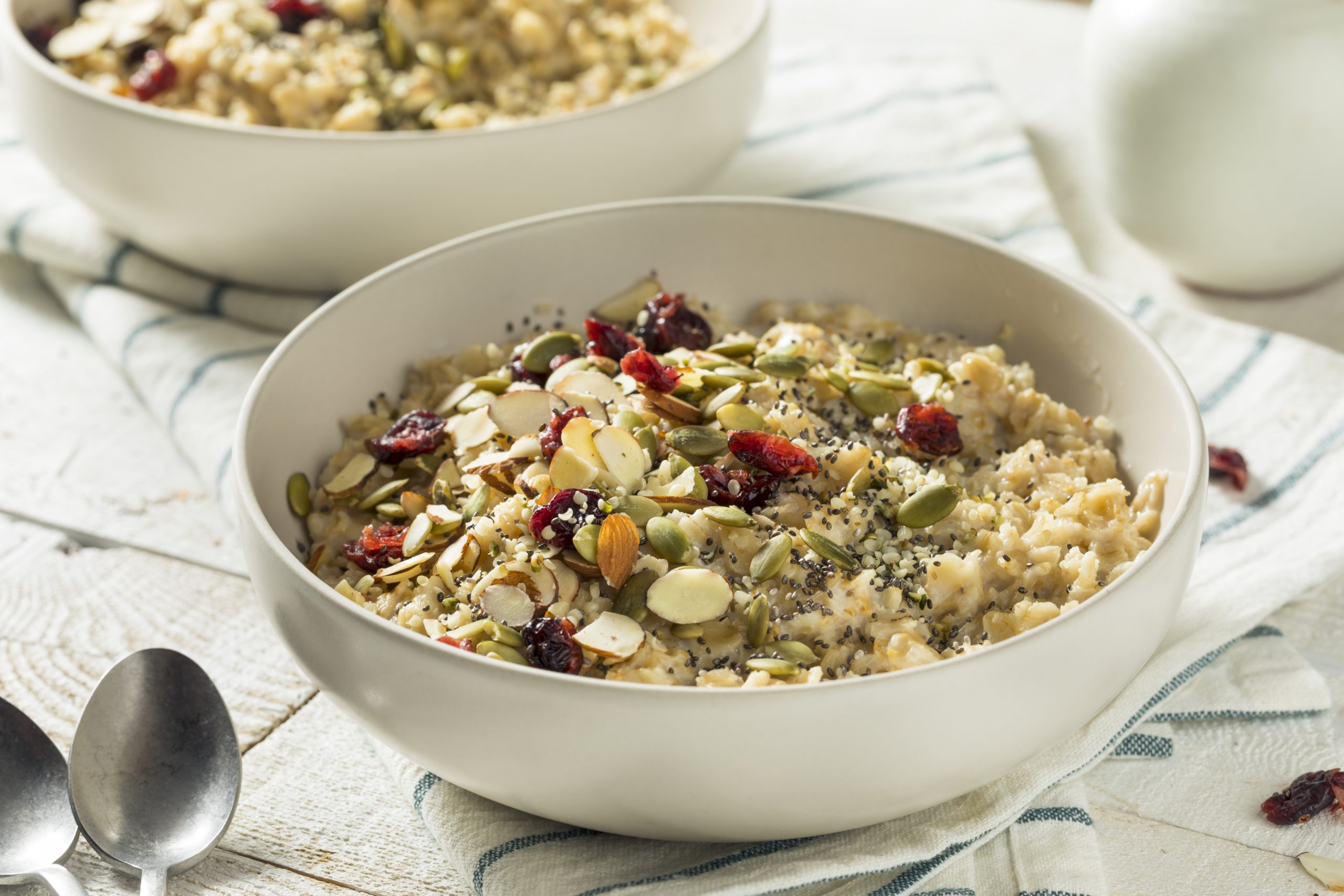
Start your day with Super Seedy Morning Oats, a quick and protein-packed breakfast that’s ready in minutes! This easily adaptable microwave recipe delivers 15g of plant-based protein in a warm, spiced bowl of organic rolled oats infused with cinnamon, cardamom, and ginger. A medley of super seeds — hemp, chia, flax, sesame, and pumpkin — adds nutrition, texture, and sustained energy, while crunchy cacao nibs bring a hint of rich flavor. Customize these oats with your favorite add-ins and enjoy a satisfying, energizing start to your day!
2. Southwest Stuffed Sweet Potatoes
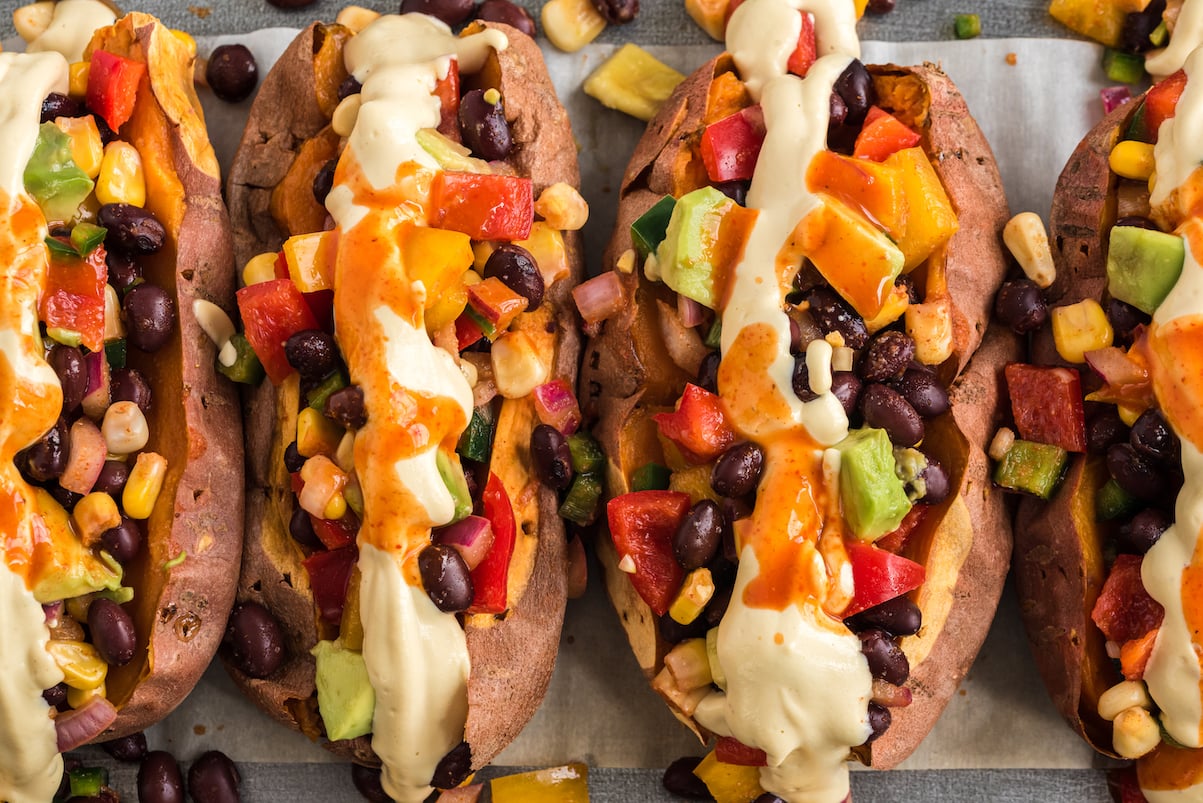
Southwest Stuffed Sweet Potatoes make a quick, satisfying meal — no oven needed! Simply microwave your sweet potatoes until tender, then load them with a vibrant Bean and Corn Medley featuring black beans, crisp bell pepper, red onion, creamy avocado, and a kick of jalapeño. A smoky spice blend, fresh lime juice, and cilantro bring bold, zesty flavor, while a drizzle of 5-Minute Cheesy Sauce ties it all together. Finished with a splash of hot sauce, this microwave-friendly meal is packed with plant-based protein, fiber, and Southwest flair — all in minutes!
3. Mexican Street Corn
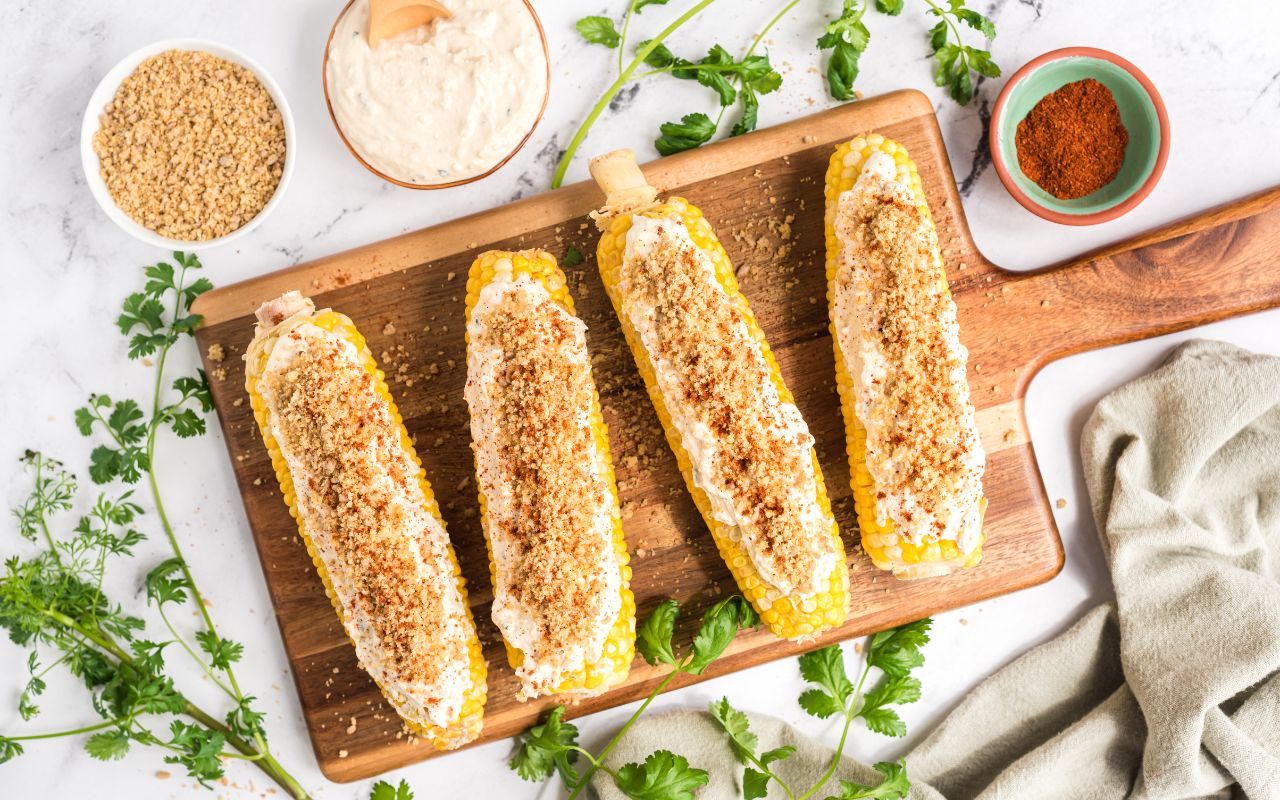
Mexican Street Corn just got even easier with this microwave-friendly twist! Sweet organic corn on the cob is quickly steamed in the microwave until tender, then slathered with creamy Easy Vegan Mayo and sprinkled with Vegan Walnut Parmesan for a savory, cheesy bite. A squeeze of fresh lime juice, a dash of chili powder, and a sprinkle of cilantro bring the bold, classic flavors to life — all in minutes. Perfect for a quick side dish or snack, this effortless microwave recipe delivers all the irresistible flavor of elote without the need for a grill!
The Bottom Line
Most microwave users put ultra-processed foods in plastic containers in their ovens, thus exposing themselves to a host of chemicals believed to contribute to cancer, heart disease, endocrine disruption, and many other ailments.
But when used correctly and for heating healthy foods, microwave ovens appear to be safe — and they can save energy and add convenience.
So, should you use one? Ultimately, that’s a personal choice. They aren’t exactly associated with gourmet cooking. But life can be stressful, and if a microwave oven helps you to have a little more ease, to spend more time with loved ones, or to have an easier time eating healthful foods, then that sounds like a win to me.
I don’t think it’s likely to cause much harm unless you put metal in it, use it when it’s broken, superheat liquids, or drop it on your foot.
Tell us in the comments:
- What do you think of microwave ovens?
- How do you use microwave ovens to cook healthy food?
Featured Image: iStock.com/Siarhei Khaletski



